Bhupesh Bhandari in New Delhi
On November 1, Hero MotoCorp, the new avatar of Hero Honda, announced that its dealers sold a record 650,000 motorcycles and scooters in October.
Farmers had harvested their crops, and salaried people had got Diwali bonuses; the company had no reason to complain.
Some days before that, it had declared its financial results for the quarter ended September 2011, the first full quarter without Honda as a shareholder, which showed that sale as well as profit had hit at an all-time high.
For several years, the Munjals, the promoters of the company, have been known as sharp businessmen but their success was always credited to technology and innovation from Honda. The ride without Honda was the real test of their skills.
The Munjals and Honda had formed Hero Honda, a 26-26 joint venture, in the late-1980s. The first sign of discord became visible over ten years ago when Honda set up a 100 per cent arm, Honda Motorcycles and Scooters India.
Finally, on December 16 last year, Hero Honda informed the stock markets that the partnership was over and Honda would soon exit the company.
...
Insider Story: How Hero Honda became Hero MotoCorp
In the days that preceded the announcement, the Munjals had formed a core team of three people to assess if life was possible without Honda.
The team, which was kept under wraps from the rest of the world, could not go out for consumer research because that would have let the secret out.
It had to rely on gut feel. What may have played on this team's mind was Honda Motorcycles and Scooters India's performance in the motorcycle market and Hero Honda's performance in the scooter market.
Both had entered these markets in 2006; while Honda had got 7 per cent of the motorcycle market, Hero Honda had grabbed over 17 per cent of the scooter market which was dominated by the Honda Activa. Technology, the team concluded, was equal for all, and what really mattered to Indians was the total cost of ownership - low price tags, high fuel economy, inexpensive spares and high resale value.
...
Insider Story: How Hero Honda became Hero MotoCorp
On December 16, immediately after it had informed the stock markets that Honda will exit the company and before answering calls from anxious analysts and inquisitive journalists, Hero Honda Managing Director & CEO Pawan Munjal did a live webcast to all employees, vendors and dealers. The dealers were the real strength of the Munjals.
Chairman and family patriarch Brijmohan Lall was on first-name terms with each of his 450 dealers, and he had made it a practice to interview all prospective dealers.
The next day, the key hundred or so dealers were brought to Delhi, and the father-son duo apprised them of the situation.
Within ten days, each one of the 100,000 or so mechanics and salesmen of the dealerships and the 4,000-odd touch points (service centres et cetera) were given dockets on the subject, and their questions were answered by the company's employees. Close to a year later, Hero MotoCorp claims not a single dealer left it, in spite of the doomsday projections.
...
Insider Story: How Hero Honda became Hero MotoCorp
Image: The Munjals launched the new company name and brand identity at the O2 arena in London on August 7And when the Munjals launched the new company name and brand identity at the O2 arena in London on August 7, the presence of the army of dealers wasn't missed by observers.
Somebody who was there says there were at least 1,000 of them. Obviously, many dealers didn't travel alone.
With the dealers reassured, another core team of five was formed under Pawan Munjal to give the company a new name and a new brand identity.
Though the Munjals had the option to use the Hero Honda brand till June 2014, they decided to replace it as early as possible.
As it involved renewal, the project was codenamed Yajna. The team gathered about ten case studies of companies that had gone through such rebranding.
...
Insider Story: How Hero Honda became Hero MotoCorp
There were some international cases in the lot, though the majority was Indian. Some were success stories, others were not.
The job from here was to find the right specialist to rename the company and design a new brand, and then find an advertising agency that could convey the makeover in an effective way.
In the days that followed, the Munjals sent out feelers to brand specialists from across the world. One of the go-betweens contacted Charles Wright of Wolff Ollins, an Omnicom company.
Wright perhaps knew that this was no small opportunity: Hero Honda (as it was called then) was the largest Indian maker of two-wheelers.
The very next day, he was in the Hero Honda office in a cramped south Delhi market (the Munjals don't move out of the market apparently because they consider it lucky for them) to meet Munjal and his brother, Sunil.
...
Insider Story: How Hero Honda became Hero MotoCorp
The two explained the situation to Wright - the reasons for the separation with Honda and the roadmap ahead. Many more conversations followed.
What seems to have swung the deal in Wolff Ollins's favour (there were at least three other consultants in the fray) was its work for Tata DoCoMo.
The Munjals wanted the new company name and brand to reflect change with continuity as it would be unwise to let go off Hero Honda's brand equity.
The brief given to Wolff Ollins was that the new name and brand should highlight Indian engineering, and signal that the company now plans to go global (earlier it could sell only in those countries where Honda was absent) and branch into new segments of the automobile market - three-wheelers, for instance.
All primary data that the company had collected over the years on brand health and consumer psychographics were put at the disposal of Wright and his team of 20 drawn from the firm's offices in London, New York and Dubai.
...
Insider Story: How Hero Honda became Hero MotoCorp
This team, which of course included some Indians, flew to India to and interacted with the company's promoters, employees, dealers, vendors and customers to get a feel of the brand.
"The research," says Wright, "showed the affection the brand has long enjoyed in the hearts of Indians and how this strong bond is born of the way a two-wheeler transforms the economic and social circumstances of the common man."
By mid-year, Wolff Ollins gave its output. The name, it said, should be Hero MotoCorp - Hero to signal continuity and MotoCorp to indicate mobility, modernity and technology.
It kept the door open for the company to get into segments other than two-wheelers. So far as the brand was concerned, Wolff Ollins stuck to the black and white of Hero Honda for continuity but gave it the shape of an "engineered" H: a red parallelogram with a black triangle and trapezium.
The Hero next to it was in red, to signify warmth and friendliness, and all the letters were of the same size.
...
Insider Story: How Hero Honda became Hero MotoCorp
Image: The new Hero MotoCorp commercialThere were no sharp edges in the letters, which, says Hero MotoCorp Senior Vice-president (marketing and sales) Anil Dua, reflects the Indian feel. "Together, the two stand for Indian engineering."
In March, the Munjals had appointed Law & Kenneth to devise the communication strategy for the new identity. Its people were made to work with the Wolff Ollins team to (1) create ownership and reduce friction, and (2) cut the go-to-market time.
The baton was now passed to it. Law & Kenneth came out with the punch line, hum main hai hero (there's a hero inside us). The Munjals liked it.
They knew it had universal appeal. Everybody likes to feel that he has it in him to reach his full potential, and thus there are better times to come.
The line was then passed on to lyricist Irshad Kamil to write an anthem around it. Kamil had made a name for himself with his lyrics in films like Chameli, Love Aaj Kal, Jab We Met and Ajab Prem Ki Gajab Kahani.
...
Insider Story: How Hero Honda became Hero MotoCorp
Once the anthem was ready, A R Rahman was contracted to set it to music and sing it as well. Rahman was in Los Angeles where he composed the tune.
An anxious Munjal went over every stanza and line with him on Skype. Once Rahman had done his job, film maker Anurag Kashyap (Dev D, Gulaal, Black Friday, That Girl in Yellow Boots et cetera) was brought on board to make a film around it.
The storyboard was the achievements of ordinary people - a girl from Jharkhand who wins a medal at a gymnastics championship, a young boy who wins a dance contest et cetera.
The celebrities on the company's rolls - film stars like Hrithik Roshan and cricketers like Virender Sehwag - were kept out of it, perhaps because the Munjals didn't want the message to get lost.
Kashyap shot the film at various locations in India, except the shots of Rahman which were done in Los Angeles. The Munjals were now ready to roll.
...
Insider Story: How Hero Honda became Hero MotoCorp
Image: Shahrukh Khan and Akon perform at the luanch of Hero MotoCorp's new logo in LondonThey chose to unveil the new identity in London on August 7. This was done, of course, to signal that the company would now go global; according to Dua, London was also chosen because it is a good blend of history and modernity - just the thought that the Munjals wanted to convey about their company.
On August 15, Independence Day, 30 television channels were flooded with the new campaign, front page slots were bought on leading newspapers, and leading websites were roadblocked.
In the days that followed, the campaign was put on 200 radio stations and 4,000 cinema halls in Tier 2 & 3 cities, and signages were changed in all the 4,500 consumer contact points like dealerships and service centres.
Cleverly, the company had gone cold on all marketing and media spend for the last month and a half; this helped it conserve cash when this campaign broke.
As a result, says Dua, the advertising expenditure has stayed within the average of 2-2.5 per cent for the July-September quarter.
...
Insider Story: How Hero Honda became Hero MotoCorp
The results, Dua claims, have been better than expected. "Our market share in motorcycles has improved from 54.5 per cent to 55.5 per cent in the last one year, and our mindshare has gone up by four percentage points after the campaign."
Spontaneous brand awareness, where people are asked to name two or three motorcycle brands, Dua says, has improved from 99 per cent in the Hero Honda era to 100 per cent in the Hero MotoCorp days.
These are still early days; the challenge is to sustain it in the future.

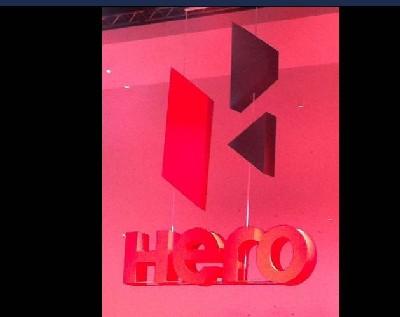

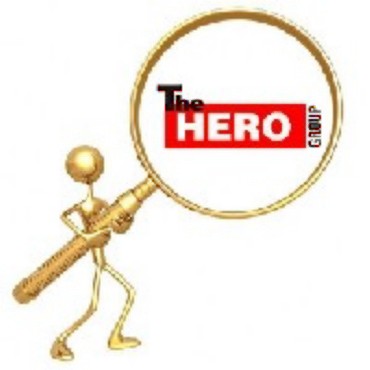
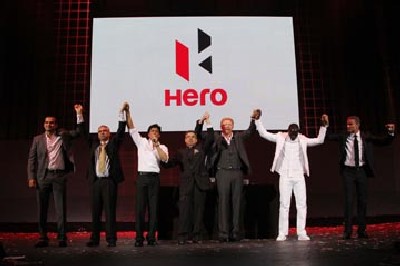

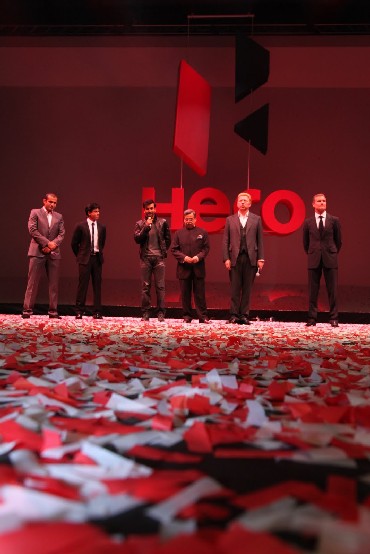

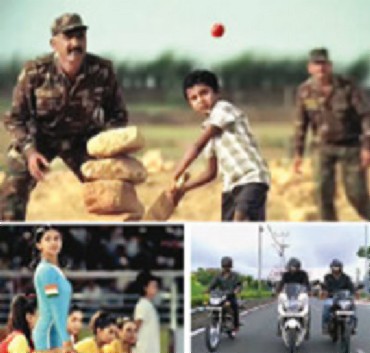

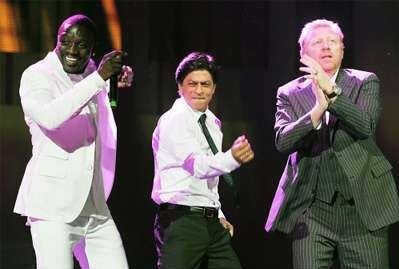


article